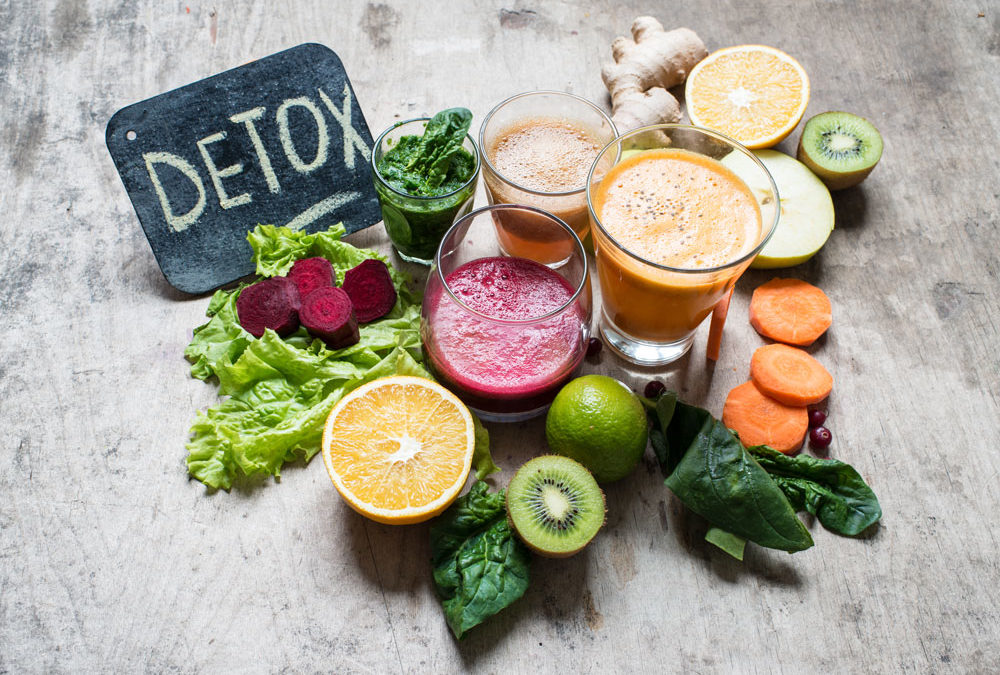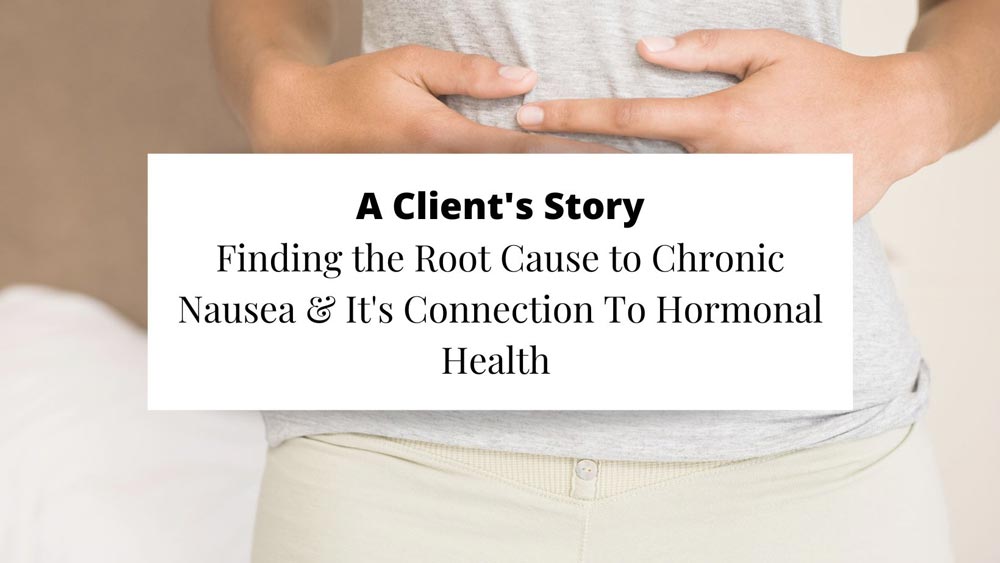Environmental toxins can burden your body and affect your hormonal balance leading to symptoms such as heavy periods, painful periods, acne and fluid retention.
A hormone detox can be beneficial if you experience symptoms of oestrogen excess.
When you hear the word detox, you might associate it with drastic diets, avoiding foods that you love, and feeling crappy.
But what if an annual detox could reduce your risk of developing chronic disease, reset your hormonal balance and improve your health?
Detoxification is one of the most powerful health practices you can do for your body, and is becoming essential for the modern age.
Up to 800 chemicals have been shown to affect a female’s intricate hormonal system, increasing the risk of thyroid disease, diabetes, obesity, cancer and more.
Environmental toxins – We are living in a toxic soup
Every year, new chemicals are put into our environment, our food and water supply, and it’s simply impossible to avoid them all.
According to a report by the World Health Organisation, there are a number of chemicals that have been shown to negatively impact our hormones.
“Close to 800 chemicals are known or suspected to be capable of interfering with hormone receptors, hormone synthesis and hormone conversion. However only a small fraction of these chemicals have been investigated in tests.
This lack of data introduces significant uncertainties about the true extent of risks from chemicals that potentially could disrupt the endocrine system,” says a WHO report on endocrine disrupting chemicals (EDCs). (1)
Your Genes Govern Your Detoxification Capability
With increased exposure to chemicals, our bodies detoxification abilities are constantly put to the test, but the catch is that certain people just don’t have the detoxification stamina to keep up.
Depending on the types of genes that have been passed down from your parents, you could either be very good at eliminating certain toxins.
Alternatively you may have been handed genes that reduce your ability to process heavy metals, pesticides, herbicides, and persistent organic pollutants, causing toxic accumulation in your body.
For example, there are certain gene variants such as GSTT1 and GSTM1 which are associated with an antioxidant called glutathione.
Glutathione is a master antioxidant of the body binding to and eliminating a number of toxins such as herbicides, pesticides, and heavy metals.
If you have a variant in either of these genes, it means you will be more prone to chemical accumulation and toxicity leading to the adverse health effects compared to someone that doesn’t have these gene variants.
When your body has become burdened by a number of chemicals and toxins, and it’s affecting your body to function optimally a number of symptoms and health challenges can be begin to occur.
Symptoms of toxicity
Toxicity is when your body is overburdened by man made chemicals and toxins, causing dangerous blockades in your body’s normal ability to send signals for optimal functioning.
It’s like you trying to send a text message to your friend but the network has been disconnected, the message won’t get through.
An example of this is a class of chemicals known as endocrine disruptors.
These can greatly impact the communication between certain hormones in your body leading to problems associated with:
- Blood sugar regulation issues leading to symptoms of dizziness, low energy and increased risk of diabetes
- Weight and obesity
- Hormonal imbalances associated with high oestrogen such as heavy painful periods, endometriosis and fibroids
- Infertility
- Hypothyroidism (under-functioning thyroid)
The list of chemicals that are associated with disrupting your hormones include:
- Bisphenol A: Found in plastics such as plastic water bottles, plastic containers, thermal receipts, inner lining of canned foods, plastic utensils and cups.
- Brominated and Organophosphate Flame Retardants (volatile compounds): Found in rugs, foam furniture, carpets, floor polish, nail polish and textiles
- Pthalates: Cosmetics, furniture, food packaging and children’s toys
- Insecticides/Pesticides: Found in bug spray cans, termite control, lawn and garden treatments, animal flea and tick control, headline treatments
Hormone Detox
Protecting your health from toxic burden is paramount to protect your hormonal balance, prevent chronic disease and improve your overall health and wellbeing.
If you’ve never had your genes tested and it’s not on your radar right now, reducing your overall exposure to toxins is a crucial first step in detoxifying your body, and is something that every woman should be doing.
Aim to implement the following lifestyle and environmental changes to reduce your toxic body burden.
Improve your body’s capacity to eliminate toxins through an annual detoxification strategy.
1. Reduce Pesticide Exposure by Choosing Organic Produce
Going mostly organic for one week has been shown to reduce urinary pesticide levels by nearly 90%. (2)
If you choose to not to buy organic, rinsing your vegetables and fruit will reduce the amount of pesticides present, but it won’t completely eliminate them.
Peeling does help, but it will reduce valuable nutrients that are often found within the skin of fruits and vegetables.
Alternatively the second best approach is to purchase fruits and vegetables locally from farmers markets and talk to your local farmer directly.
You may find that certain produce have barely been sprayed or has been sprayed minimally at different times of the year, reducing your total exposure.
The environmental working group also frequently updates their clean fifteen list and dirty dozen list, however keep in mind this is based on US guidelines and is therefore not 100% interchangeable for Australians.
2. Reduce plastic use and BPA exposure
Reducing your exposure to Bisphenol A found in plastics, is an essential part in optimising hormonal health.
One of the largest exposures to BPA is drinking water from plastic water bottles.
Unfortunately even Bisphenol A free water bottles still contain other types of Bisphenol substitutes that have the same hormonal impact as BPA .
Switch to either a stainless steel water bottle or my preference, a glass water bottle. Simply reusing a glass Voss or Antipodes water bottle is an affordable and cheap way to replace plastic.
Another high exposure of BPA is through food storage in plastic containers or heating food up in plastic. Always ensure you are transferring hot food into glass containers, or allowing food to cool before putting them in plastic.
Also ensure you are eating out of ceramic or glass bowls and not heating your food in plastic containers in the microwave.
Lastly, avoid eating out of cans as the lining contains plastic and BPA and reduce your contact with receipts.
3. Opt for 100% natural personal care products
Tossing out your favourite personal care products such as under arm deodorant, body wash, shampoo, conditioner, face moisturiser, and makeup can initially feel like an overwhelming task especially when you’ve been using a brand for years.
Gradually switching your personal care products over a few months, is better then never doing it at all as it greatly reduces your chemical exposure.
Start with switching items that are covering the largest skin surface such as your body moisturiser and body wash.
Your skin absorbs up to 60% of what you put on it, so it makes sense to switch these items first, reducing your total exposure.
A few of my favourite brands to switch to for both body and face care products are: 100% pure, Dr Bronner’s, and Mukti Organics.
Switching your underarm deodorant is also high on my priority list as chemical laden, aluminium deodorants are absorbed directly into the lymphatic system and are also close to breast tissue.
A few of my favourite brands are No Pong and Black Chicken Axilla Deodorant Paste.
4. Surround your self with plants to filter indoor air
Incorporating potted plants into the work environment has been shown to reduce indoor air pollution significantly with in 24 hours. (3)
These include a reduction in VOCs (volatile organic compounds) such as formaldehyde, xylene/toluene, benzene, chloroform, ammonia and acetone.
Common plants that have been studied to reduce VOCs (volatile organic compounds) include snake plant, spider plant, peace lilly and golden pothos (also known as devil’s ivy). There was no difference between effectiveness of each plant species.
5. Undertake a detoxification program annually or bi-annually
An annual detoxification program is a great way to reset your diet, detox your environment, taking the toxic load off your body, allowing it to remove stored toxins.
The right detox program also helps to create a healthy internal environment, optimising your digestive, liver and kidney health which are the three main organs essential for healthy toxin elimination.
Not all detox programs are the same and it’s important to ensure you are receiving the correct nutritional support to safely and effectively remove toxins from your body.
Summary
I hope that these five steps will help you to reduce your toxic exposure, and open your eyes to the impact of these toxins on your hormones and overall health.
Now I’d love to hear from you, what steps will you start implementing today to protect your health?





